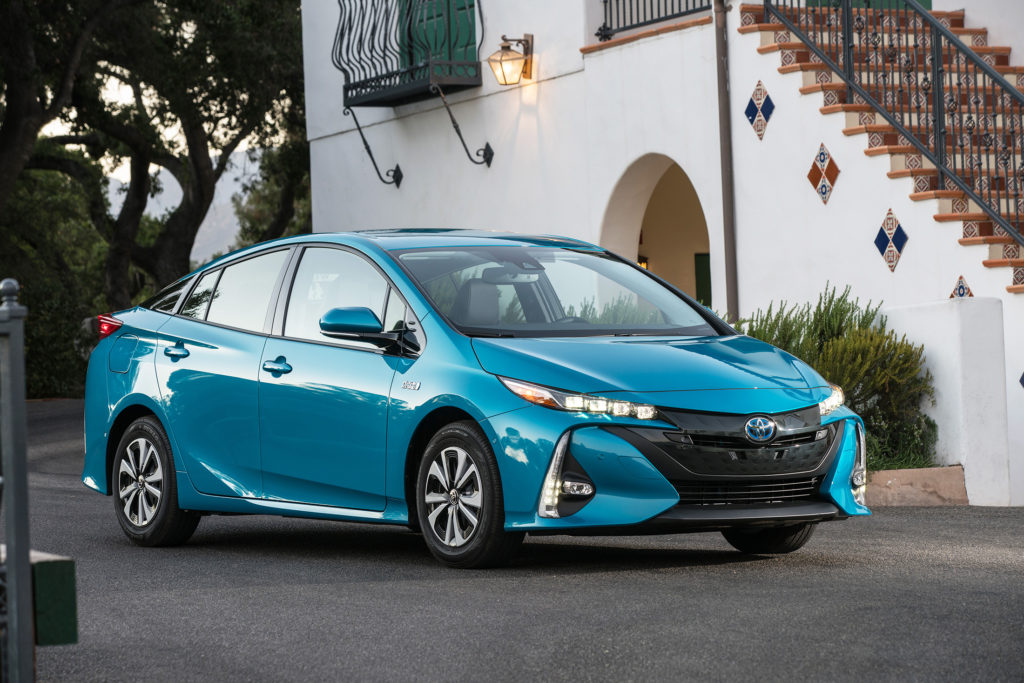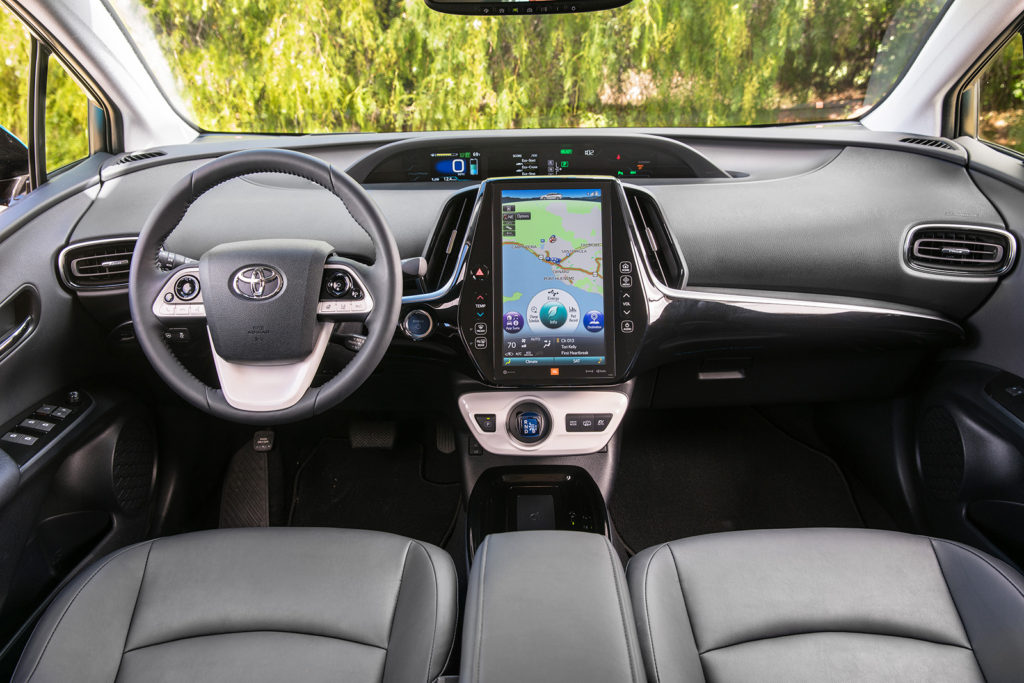Cargazing
By Derek Price
If you want to peek inside an alternate universe to see what everyone would be driving if gas prices weren’t so cheap right now, take a look at this car: the Toyota Prius Prime.
It’s OPEC’s worst nightmare.
This is the car that could see America go through an oil embargo relatively unscathed, assuming Toyota could ramp up production in time. For now, though — in a period when sustained affordable gas prices make huge pickup trucks, crossovers and SUVs sell like caffeine-soaked hotcakes — the Prius Prime draws interest from a relatively small niche of eco-conscious buyers.
Why is it so special? Because it makes gasoline completely unnecessary for around-town trips and very inexpensive for long ones.
A 25-mile range under battery power means the Prius Prime won’t burn a drop of fuel for most people’s daily errands. And after that 25-mile range is used up, you’ve still got a gasoline engine that gets 55 mpg in the city and 53 on the highway, according to EPA ratings.

The Prius Prime’s futuristic style reflects the radical engineering beneath it. It’s an electric car with a 25-mile range, but it also has a highly efficient hybrid gasoline powertrain.
That means if King Salman decides to jack up our fuel prices, it’s no problem in the long term. We’ll all eventually buy Prius Primes and go about our lives in comfortable, if smaller, normalcy.
Yes, the comfort in this car was a pleasant surprise in my weeklong test. It’s comfortable from the driver’s standpoint, with strong, silent acceleration typical of the best electric cars so you never feel frightened on highway on-ramps. It’s also impressively quiet, smooth riding and reasonably roomy for passengers, even in the back seat.
One glaring downside, though, is the lack of a middle seat in back. The Prius Prime only has two seats back there, which is good for roominess but not very practical for some families who occasionally need to haul a fifth person around.
And while the styling is more stunning, I don’t think it drives quite as well as the new Chevrolet Volt, which has both a longer electric range and a more solid, substantial feel over the road.
The Toyota’s body, though, is much more appealing to me.
The Prius Prime and the Volt are both aiming to be “cars of the future,” but only one of them looks the part in my eyes. The Prius Prime, even more so than the ordinary Prius, has an exaggerated sense of futurism in its otherworldly lines.
I’m a particularly big fan of how the back end looks, too, with a dip in the middle of the tail that’s distinctive and unusual. I wish every car was designed so creatively.
Inside, it’s just as eye-popping.
Keeping with its futuristic theme, it’s packed with more digital real estate than most cars. It has acres of LCD screens on the inside, including a gigantic, vertical, iPad-style touchscreen that dominates the center stack.
While it’s certainly flashy, the digital interface doesn’t quite match the industry’s best work — currently a crown shared by Tesla and Volvo, in my view — but still may be the best I’ve seen at this price point. With pinch and zoom functionality, along with capacitive touch switches to the side, it’s instantly familiar to people who use tablets and smartphones.

The Prius Prime’s cabin is equally forward-looking, dominated by digital screens for information and entertainment.
As a whole, the Prius Prime is an incredible piece of engineering for people who want to burn less fuel and drive something futuristic. It looks and drives like a cutting-edge vehicle, because that’s exactly what it is.
I just feel sorry about Toyota’s unfortunate timing. If they had a crystal ball, they’d release a new Prius whenever gas prices are expensive and a new Tundra pickup when gas is cheap. With many years of lead time required and no way to reliably prophesy the direction of oil prices, it’s very possible Toyota will end up getting that order backward.
Pricing starts at $27,100 for the Prius Prime and ranges up to $33,100 for the more luxury-filled Advanced trim level.
Frustrating the Saudi royal family comes at no extra charge.
At A Glance
What was tested?
2017 Toyota Prius Prime Advanced ($33,100). Options: Paint protection film ($395), carpet floor mats ($224), aluminum door sills ($299), 15-inch alloy wheels ($899), universal tablet holder ($99), glass breakage sensor ($359), alloy wheel locks ($65). Price as tested (including $865 destination charge): $36,305
Wheelbase: 106.3 in.
Length: 182.9 in.
Width: 69.3 in.
Height: 57.9 in.
Engine: 1.8-liter four cylinder (121 net hybrid system horsepower)
Transmission: Continuously variable
Fuel economy: 55 city, 53 highway
RATINGS
Style: 8
Performance: 7
Price: 9
Handling: 5
Ride: 6
Comfort: 6
Quality: 8
Overall: 7
Why buy it?
It can operate as an electric car for 25 miles, then has a very efficient hybrid gasoline powertrain for extended range. It’s a showcase of fuel-saving technology and style.
